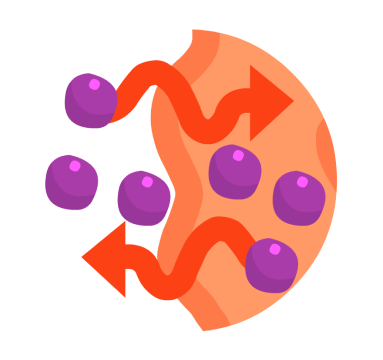Millions of functions operate continuously in living things to keep them active all the time. If we talk about the basic building blocks of living bodies, they are none other than cells. Trillions of cells are present in a human body with each having a unique function to perform. They include extracting nutrients from different food items, providing a body structure, and producing energy from the extracted nutrients.
A cell has different functions to perform, including growth, energy production, transport, metabolism, and more. This guide specifically talks about cell transport and helps you learn how to create a cell transport concept map. Moreover, it lists some cellular transport concept map templates created using a wonderful concept mapping software, EdrawMind. Let’s get into the details.
In this article
What is Cell Transport?
When a substance moves across a cell membrane, it is called cell transport. The movement of the substance can be both inward or outward. A number of molecules pass through the cell membrane or plasma membrane. Talking about the nature of the cell membrane shows that it is highly selective. The cell transport is of different types, e.g., active, passive, and facilitators. Let’s understand what exactly each type has.
Energy is required in active cell transport. This energy is present in the form of ATP, and the solute transmits from low to high concentrations through the plasma or cell membrane. Active transport is further divided into different types. They include antiport pumps, symport pumps, endocytosis, and exocytosis.
In contrast, no energy is required in passive cell transport, and the solute is transmitted from high to low concentrations. Passive transport includes osmosis, facilitated diffusions, and ion channels. Last but not least, facilitators allow the occurrence of the diffusion process through the plasma membrane.
Various intrinsic proteins carry out the cell transport system and support substances’ transportation in the cell. Pumps, facilitators, and open channels are a few types of intrinsic proteins.
The responsibility of an open channel is to allow an ion to diffuse into the cell directly. At the same time, a little chemical transformation is performed by facilitators. At the same time, pumps are responsible for forcing solutes to go through the cell membrane. It happens when the solutes are not concentrated and can’t diffuse into the membrane.
How to Create a Cell Transport Concept Map?
Now, you are familiar with what cell transport is. Let’s look at how you can create a concept for this mechanism. Since it is a complex process, you need a dedicated tool to make this diagram instead of creating it manually on paper.
Don’t worry if you don’t know how to look for and where to find a credible concept mapping utility, as Wondershare EdrawMind is here to help you out.
This is unmatchable software designed specifically to fulfill a number of your diagramming needs, like concept mapping, mind mapping, outline creation, and much more. Let’s explore the steps needed to create a cell transport concept map using this tool.
If you don’t have Wondershare EdrawMind installed on your computer or laptop, download it from the official EdrawMind website and install the tool right away. Once done, follow the steps listed below.
Step 1:Open EdrawMind and login to your account.
Step 2:Click on the “Create” button and choose "The MindMap".
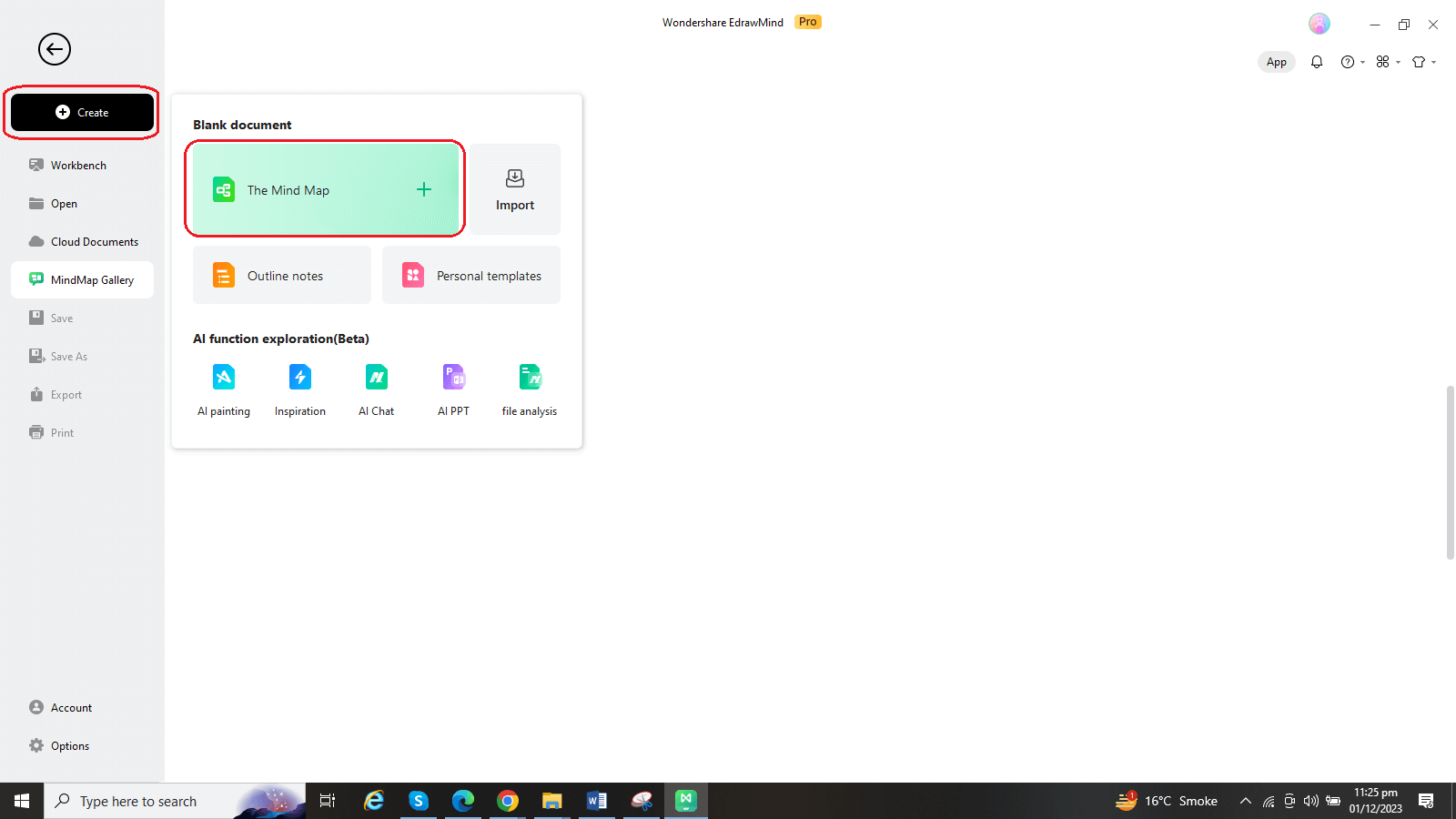
Step 3:Now, you will see a new screen on your device, as shown below.
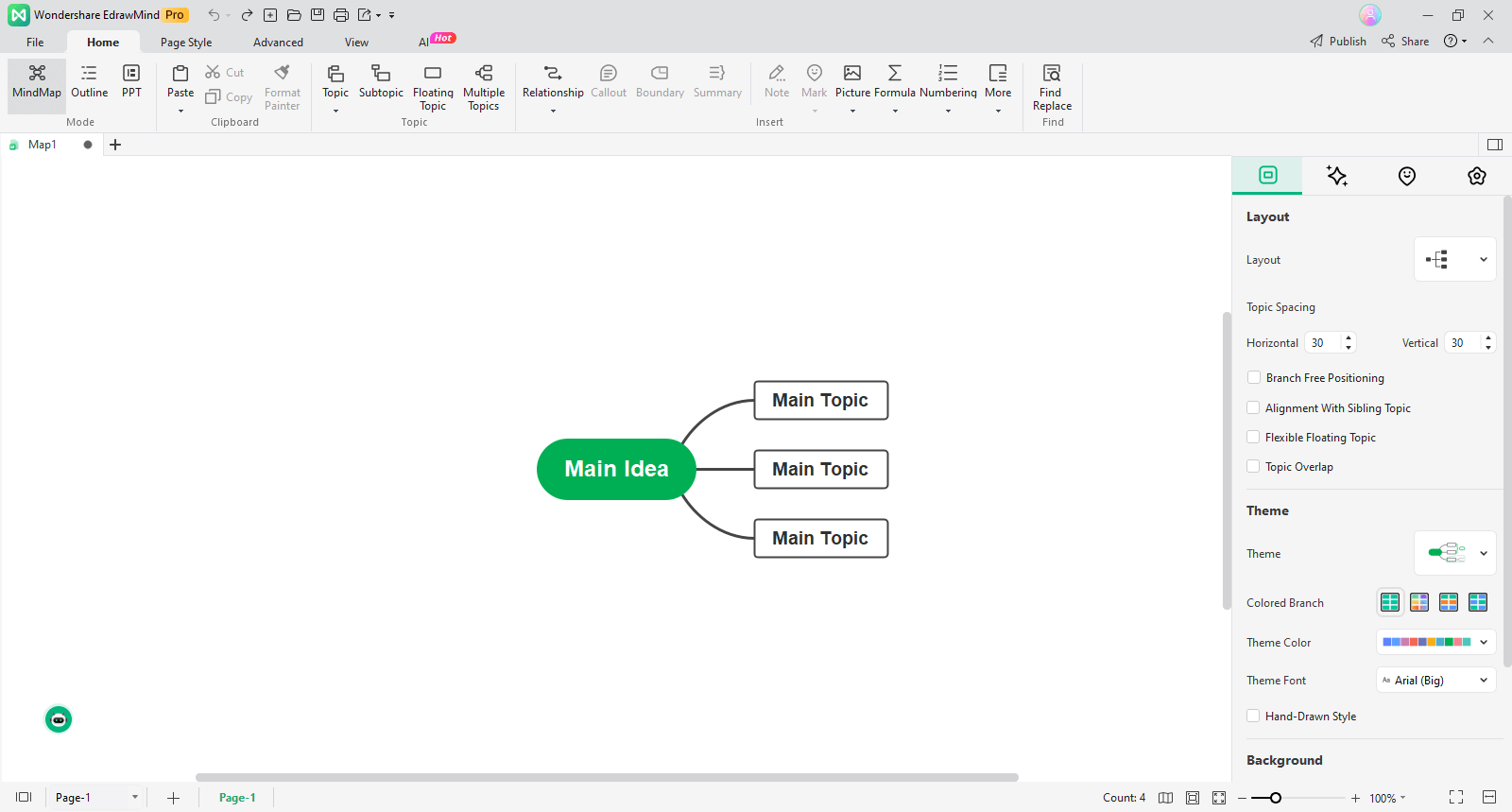
You can change the layout to the “bottom,” as given below.
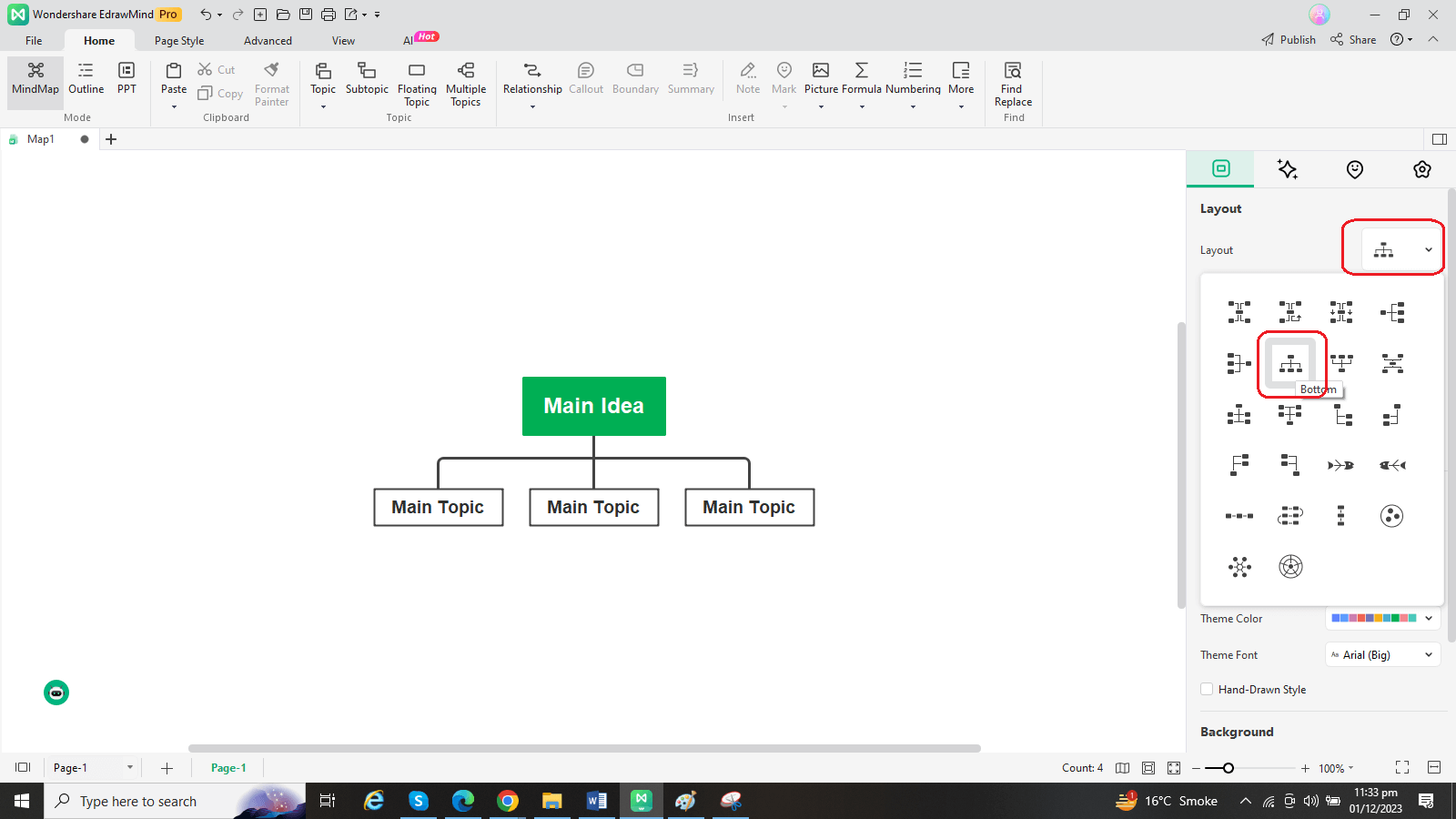
Step 4:It is time to enter the data to create a cell transport concept map. The figure below shows different types of cell transport and further categories associated with every type. You can add as many details as you want.
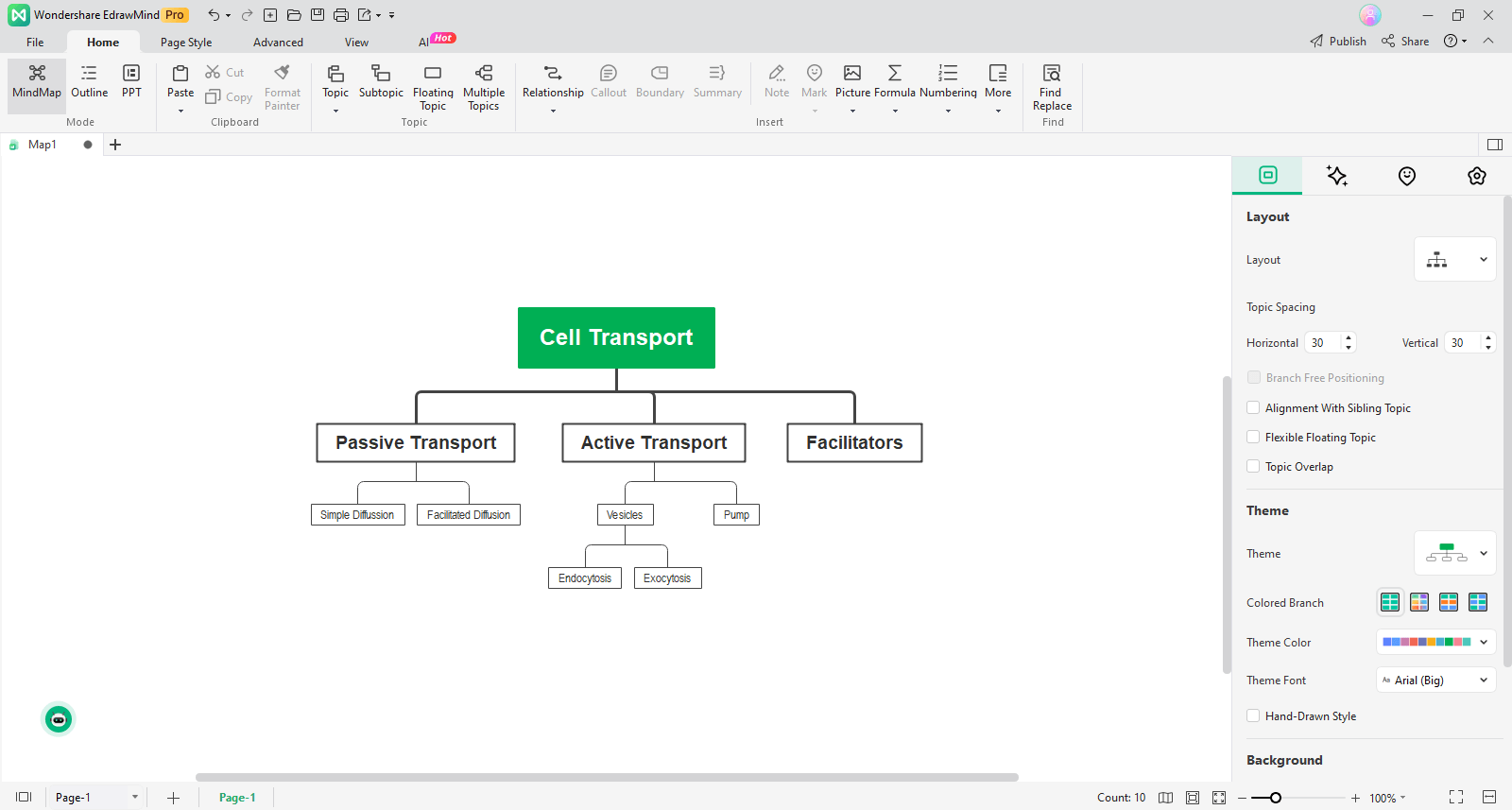
Once you enter the data, the next thing is to customize your cellular transport concept map with different colors, layouts, clip arts, font styles, font sizes, or other similar parameters you need. EdrawMind fully authorizes you to customize your map to best match your requirements.
Step 5:If the final map is ready, you can save it on your device by exporting it from EdrawMind, which is a super quick and simple process. Go to the top ribbon, click on the "File" option, and hit “Export.” There, you can choose a specific file format from the list.
As soon as you choose the right format to export your map and select the desired path on your computer, tap on the “Export” button. It will help you save the map on your device.
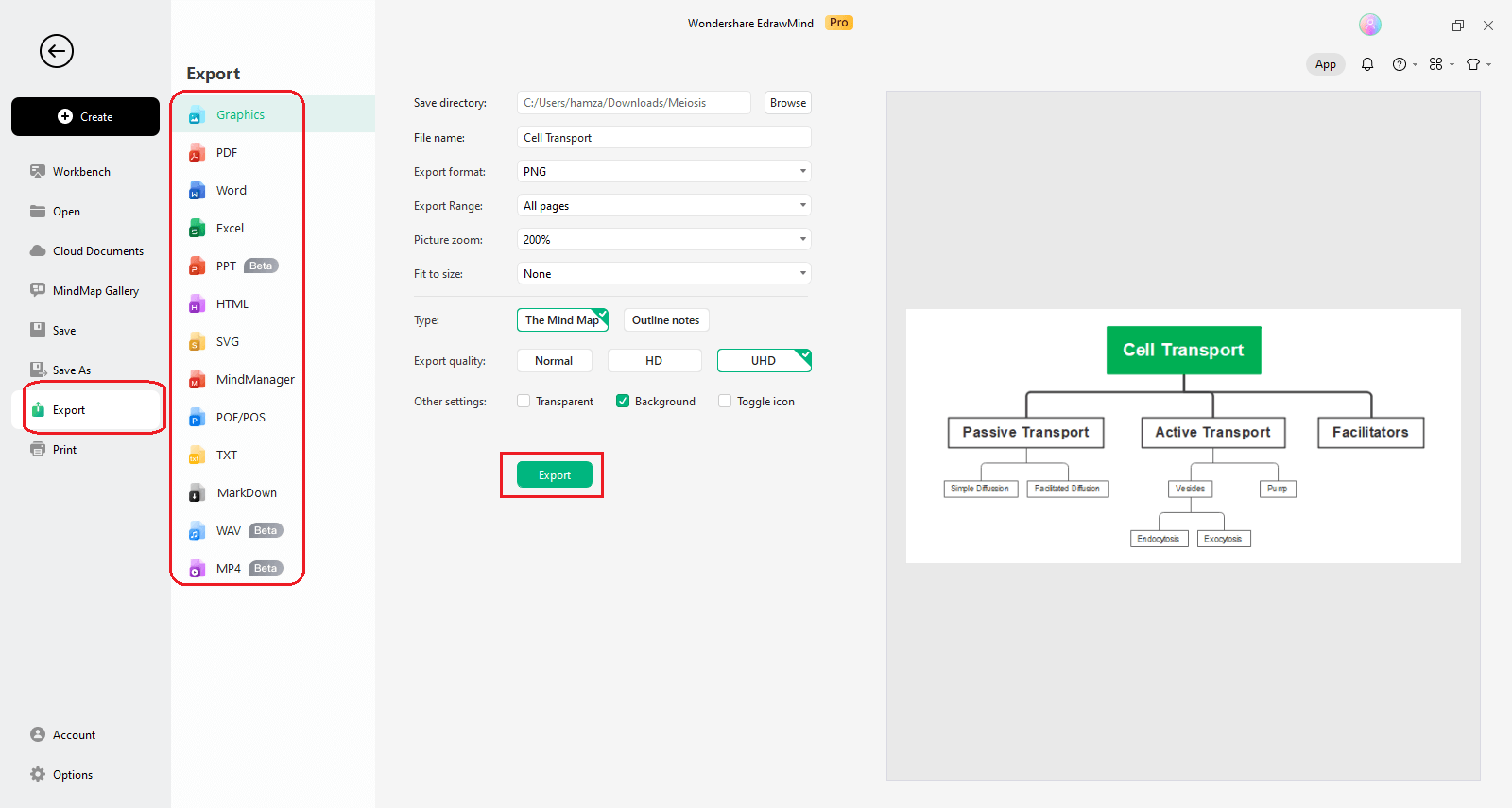
EdrawMind also allows you to directly share your map with your digital community. For this, click on the "Share" button. You will find it in the upper right corner, as shown below.
Once you hit this button, a pop-up screen will appear on your screen. You can copy a shareable link from the pop-up screen. Plus, it allows you to set the expiry date of the link.

Cell Transport Concept Map Templates
In this section, you will explore cellular concept map templates you can access easily from the EdrawMind gallery.
1. Cell Transport Methods Concept Map
This example presents different methods of cell transport, like active and passive transport. It says that the active transport uses energy. In this process, molecules move from low to high concentration. On the other hand, passive transport does not require energy, and molecules move from high to low concentration, as discussed earlier in this article.
Vesicles and pumps are associated with active cell transport, whereas simple diffusion, osmosis, and facilitated diffusion are connected to passive cell transport, as you can see in the diagram below. If you want to make a similar diagram, try this template.
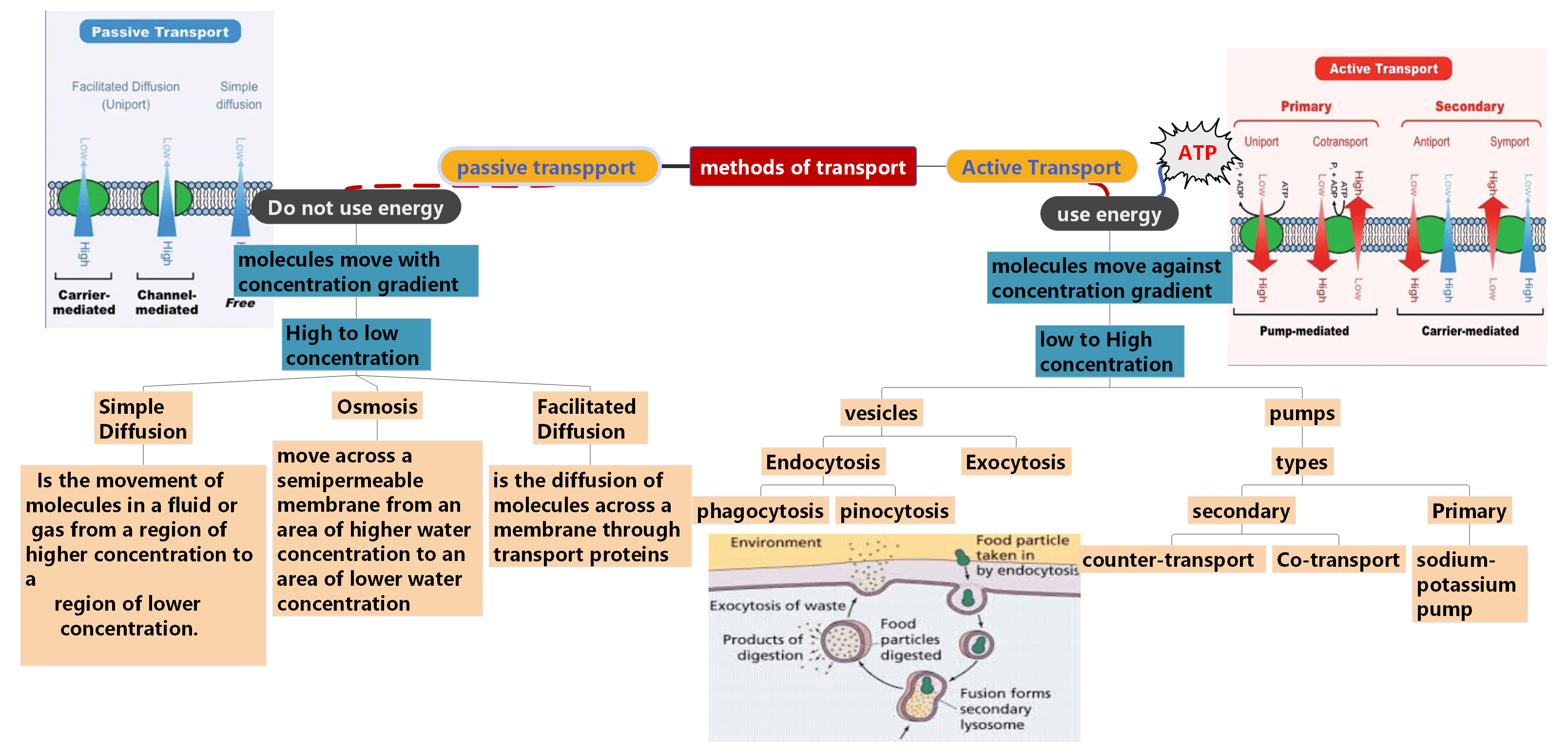
2. Animal Cell Concept Map Template
This is an editable concept map template for cellular transport. It shows that an animal consists of the cell membrane, cytoplasm, and nucleus. Further, it says that the cell membrane is composed of proteins and lipids. According to this diagram, the cytoplasm contains organelles and serves as a reaction medium.
If you delve into further details, you will come to know that a nucleus is composed of chromosomes, and chromosomes are made up of DNA. DNA is used to control different cell activities. Three different organelles are presented in this diagram, like mitochondria, non-living granules, and ribosomes.
Mitochondria are used for oxidative phosphorylation, non-living granules are used for storing materials and food, and ribosomes are used for translating the genetic code.
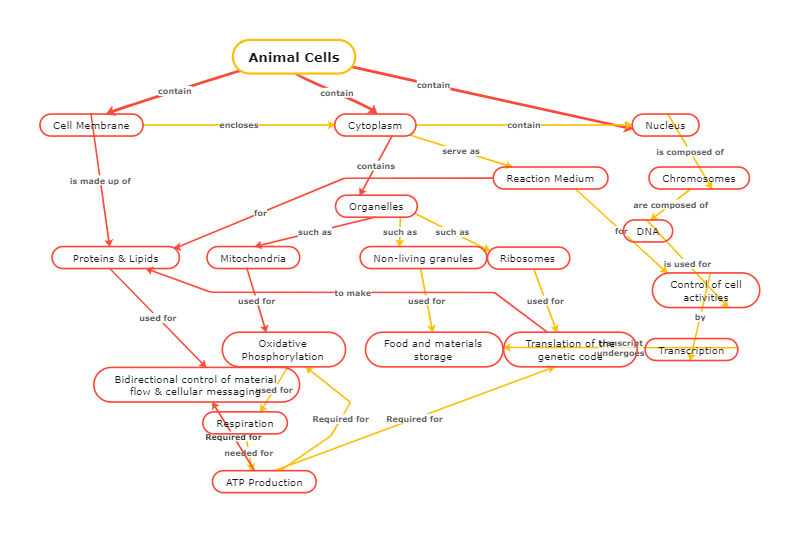
3. Eukaryote Cells Concept Map Template
Cells with a nuclear membrane around the nucleus are commonly called Eukaryote cells. This template describes the structure of these cells, including internal, boundary, and external.
The outer structure consists of appendages and glycocalyz. The boundary is associated with the cell wall and cytoplasmic membrane. In contrast, the internal structure consists of cytoplasm, nucleus, organelles, ribosomes, and cytoskeleton.
If you are looking for quick help to make a similar diagram, try this editable template available in the EdrawMind mind map gallery.

Ending Note
Transport is one of the major functions of an animal cell. It refers to the situation when a substance moves across the cell membrane. This movement can be into or out of the cell. The major purpose of transport is to maintain the proper contents of nutrients, ions, proteins, and salts in the cell.
Though it is a complex concept, you can use a cell transport concept map to understand it in a better way. Using a cellular transport concept map helps you remember the information available in the diagram and enables you to grab the main ideas immediately. More importantly, the visual representation makes the concept easier to understand for everyone.
There are multiple tools to create concept maps, but not all are trustworthy. You may find it challenging to pick a trusted concept mapping tool, but Wondershare EdrawMind swims your worries away. This is incredible software to make concept maps and hundreds of other diagrams in a matter of minutes. As a newbie, you can use the free trial and try pre-built templates to do the job instantly.



